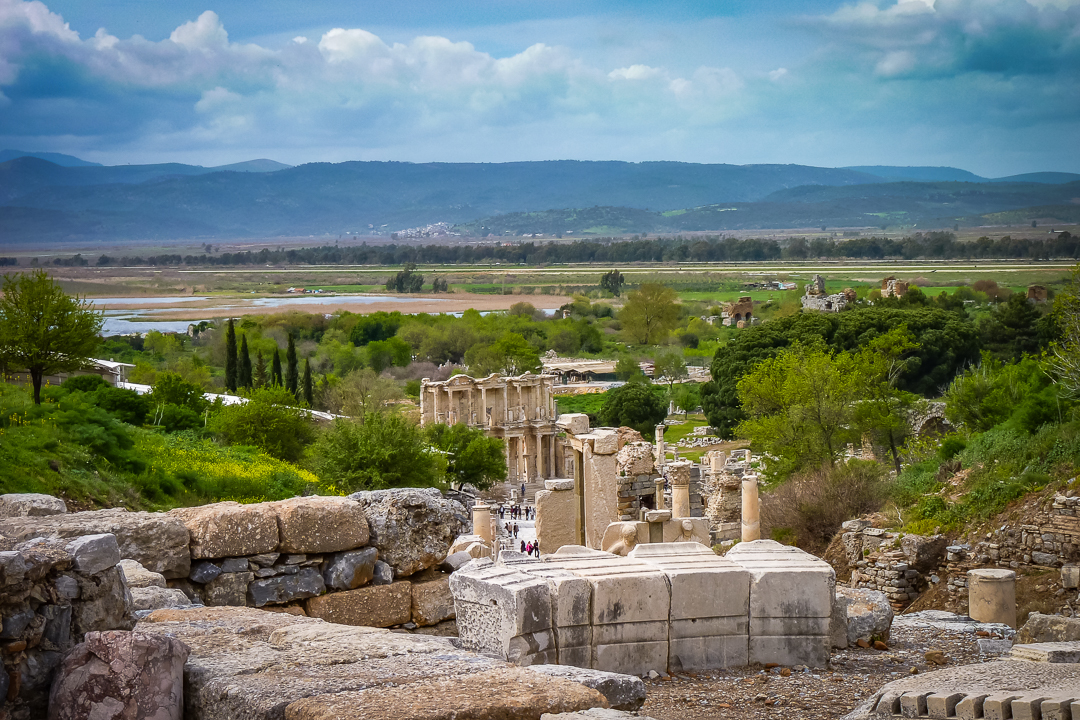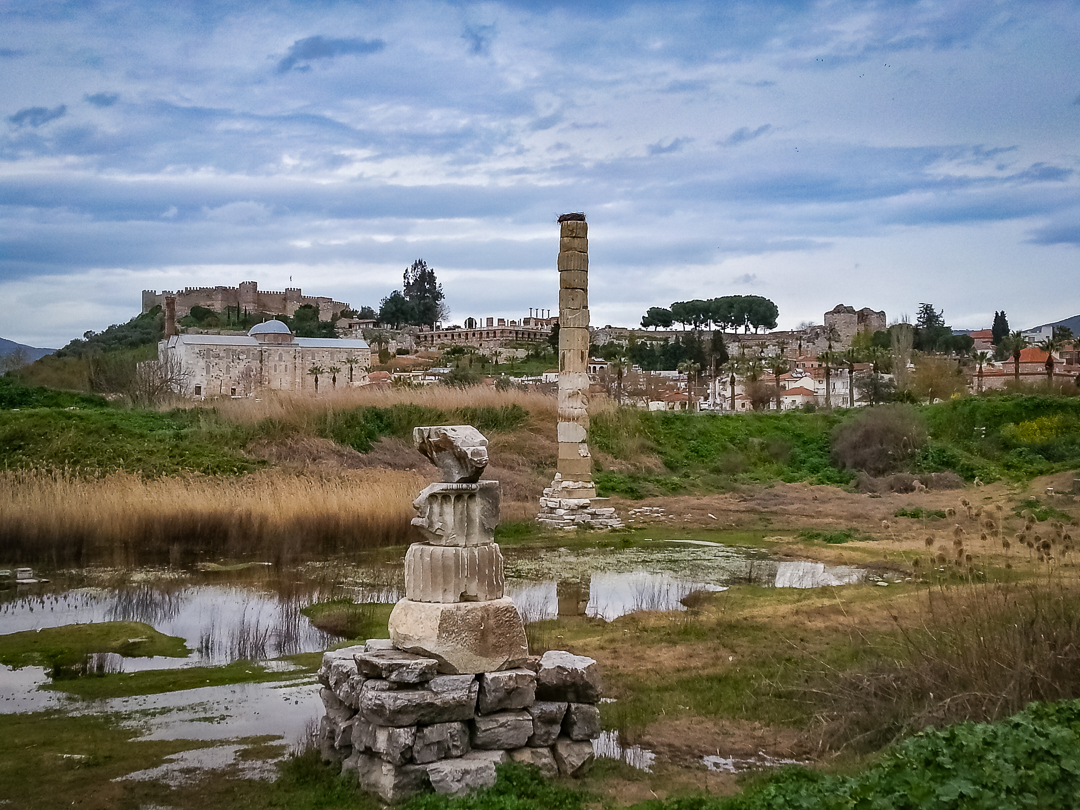Turkish Delights Part 3: Ankara, Selcuk and Pamukkale
After a breathless and besotted exploration of Istanbul, Kapil and I flew to Ankara, the capital city of Turkey.
Ankara:
Kapil and I were only able to squeeze in one full day here because there was so many other places we really wanted to cover. We spent the morning at Anit Kabir—the impressive mausoleum of the founder of modern Turkey, Mustafa Kemal Atatürk. From there we went in to the Ulus district for lunch. This is the oldest district in Ankara and is known for its cobbled streets, old houses, quaint cafes and handicraft shops.
After lunch we headed up Ulus hill to see the Ankara Castle (Ankara Kalesi). The outer citadel of this castle surrounds old Ankara, while offering visitors sweeping views of the current, much larger, city of Ankara. The Museum of Anatolian Civilisations, which is located on the southern side of the castle, showcases beautifully the rich tapestry that is Turkey's ancient past. We got here late afternoon and only had couple of hours before closing time, but this museum is well worth a few hours of your time if you are in the city.
We stayed at the Radisoon Blu, which is in the heart of the Old City. The hotel overlooks Gençlik Parkı, a massive public park which is touted as a major attraction in Ankara. Although, we did not have a chance to explore it during the day, we sat in our balcony that evening looking out at the park decked out in multi-coloured lights (see below).
Ankara: Anit Kabir - the mausoleum of Atatürk
The view from our hotel room balcony: Gençlik Parkı
Selcuk:
From Ankara we flew to Izmir. Izmir is the 3rd largest city in Turkey after Istanbul and Ankara and draws scores of visitors. However, Kapil and I were headed to Selcuk which is 90kms (a little over an hour’s drive) from Izmir.
Turkey is home to 16 UNESCO World Heritage Sites and Selcuk is the gateway to one of these incredible sites—the ruins of the ancient city of Ephesus. Ephesus used to be a Greek city on the coast of Ionia. It was established in the 10th century BC as a port and was an important commercial centre because of its location and access to the Aegean Sea. The excavated remains of this city are simply marvellous because they reflect centuries of history, from classical Greece to the Roman Empire.
This city withstood centuries of torment at the hands of nature and man alike, before slipping into decline with its loss of access to the Aegean Sea when the Küçük Menderes River silted up its harbour. These days, standing at the highest point amongst the ruins of this once great city, one can look far into the horizon and only see land. Incredibly, the harbour is now 5kms away from where it once was. Still, walking through the ruins of Ephesus, one can glimpse the glory of what once was a bustling commercial hub.
Ephesus: Standing amongst these ruins one can look far into the horizon and see only land; no signs of the Aegean Sea that once made this city an important commercial hub.
The Library of Celsus in Ephesus: It housed over 12000 scrolls. There were double walls behind the bookcases to protect the scrolls from extremes of temperature and humidity.
The Great Theatre of Ephesus can seat 25,000. Originally built in the Helleneistic Period, this was remodelled and enlarged in the Roman period.
Selcuk also boasts other major attractions such as The Temple of Artemis, Byzantine Aquaducts, Isa Bey Mosque and Ayasuluk Fortress—each magnificent in its own right; some are sobering reminders of the devastation caused by intolerance and greed.
Ephesus: This is all that remains of the Temple of Artemis. The temple is one of the Seven Wonders of the Ancient World.
Pamukkale:
Pamukkale means Cotton Castle in Turkish. This city is 200kms from Selcuk so we did a day trip while we were based in Selcuk. Pamukkale is famous for its thermal springs, which are the result of underground volcanic activity. It gets its name from the glistening white travertine terraces that stand out against the backdrop of blue skies and green valleys. The travertines are terraces of carbonate minerals left by the flowing water. Thousands flock to Pamukkale each year from all over the world. Its white terraces present a great photo op, while the mineral springs offer warm, rejuvenating relief to weary travellers.
Pamukkale is also famous for the nearby ruins of the ancient Greco-Roman spa city of Hierapolis. Heirapolis-Pamukkale is another of Turkey's stunning UNESCO World Heritage Sites.
Heirapolis was founded as a thermal spa in the 2nd century BC and soon became a healing centre where doctors used the thermal springs to treat their patients. The great baths in this city were constructed with huge stone blocks held together by various closed or open sections linked together, i.e., no cement was used in the construction. The ruins of Heirapolis include baths, temples, a nymphaeum, a necropolis and a theatre. All in all, simply stupendous! Unfortunately, our photos of Heirapolis turned out blurry and are unusable here.
The tavertine terraces of Pammukale
Pamukkale: These thermal springs draw thousands of visitors from all over the world each year.
Pamukkale: The white of these terraces is in sharp contrast to the green of the valley below.
Pamukkale: Soaking our feet in the mineral springs.
Stay tuned for the last instalment of this series of posts on Turkey where we list our favourites in the country.













